162-year-old St Andrew’s Cathedral completes 2-year restoration works in time for new year
Sign up now: Get ST's newsletters delivered to your inbox
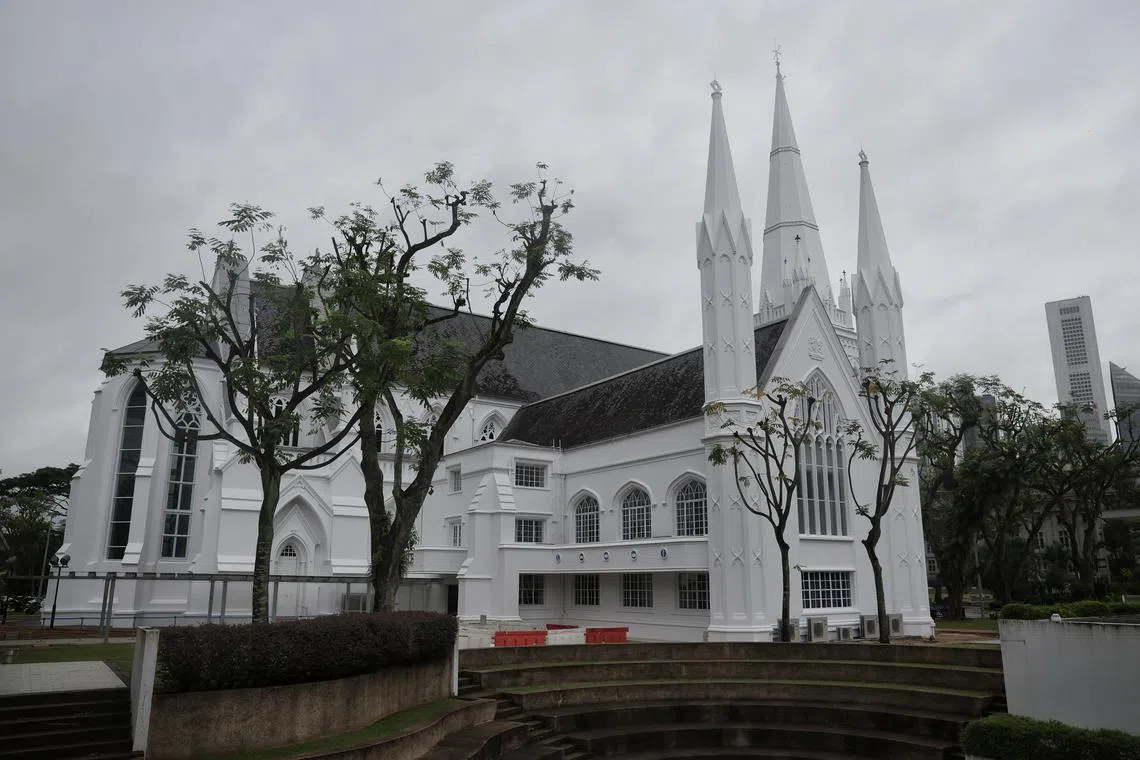
Gazetted as a national monument in 1973, the cathedral is the oldest surviving Anglican place of worship in Singapore.
ST PHOTO: KEVIN LIM
Follow topic:
SINGAPORE – For the first time in almost two years, the nave, or central section, of St Andrew’s Cathedral opened its doors for service on the night of Christmas Eve.
People started queueing to enter the building from 8pm, two hours before service was set to begin, said the Reverend Christopher Chan, the acting vicar of the cathedral in the civic district.
“We had an overflow of people attending the Christmas Eve service, so we even had to direct them to watch a live stream of the service from alternative venues within the cathedral... The (turnout) was way beyond the typical attendance numbers,” he added.
Some 1,400 people showed up for the Christmas Eve service, though the nave can hold only about 500 people.
Built in 1861, the nave of the cathedral had been closed for extensive restoration works since January 2022. These entailed plaster repairs, painting, electrical works, lightning protection installation and structural checks, as well as cleaning.
The Straits Times previously reported that these works cost about $6 million.
Gazetted as a national monument in 1973, the cathedral is the oldest surviving Anglican place of worship in Singapore. Singapore has gazetted 75 national monuments.
For the past one year and 11 months, worship services were held at two other venues on the cathedral’s premises, as the nave could not be accessed due to full-height scaffolding.
Preparation for the restoration works began as far back as in 2016, as the cathedral decided to repair certain wall areas where the plaster showed signs of visible deterioration.
Conservator Yeo Kang Shua, who was involved in the restoration works as the conservation adviser, said that besides conducting historical research and logistical preparations for the repairs, the project team had to “address the elephant in the room”.
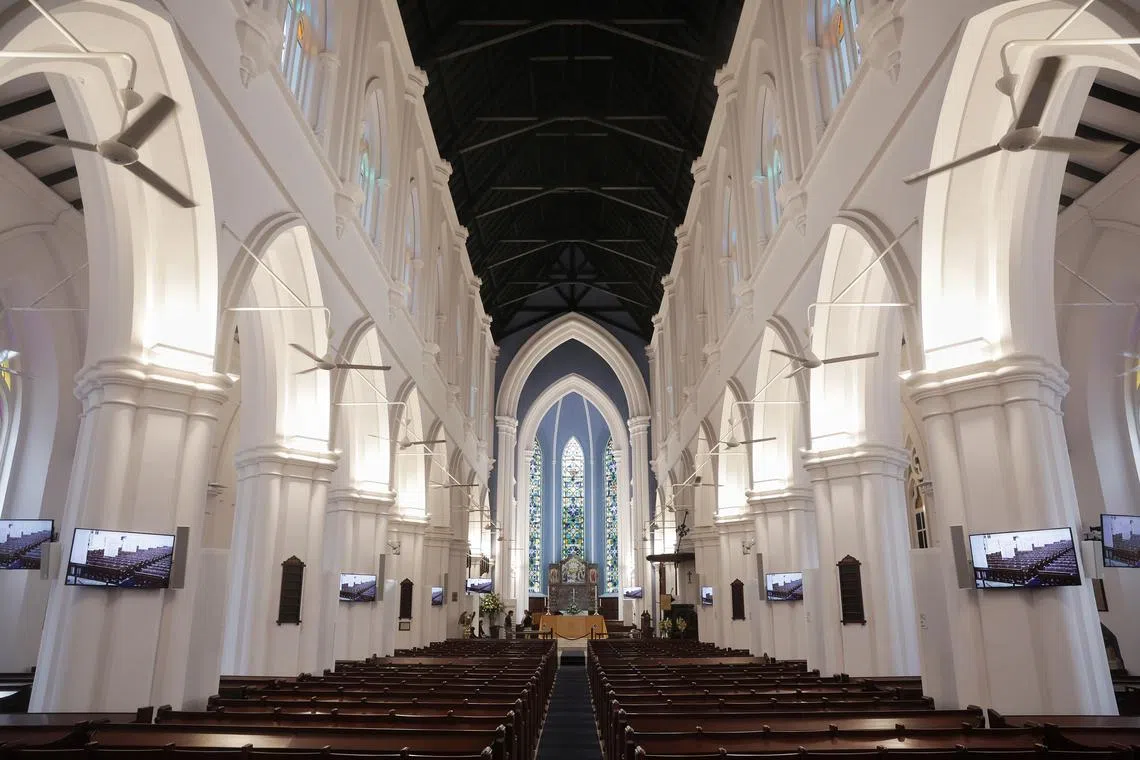
In 2019, a major restoration of the nave was approved, which involves covering plaster and painting of external and internal walls of the main building and transepts, various repairs, and electrical works.
ST PHOTO: KEVIN LIM
He was referring to the century-long assumption that Madras chunam – a labour-intensive form of plaster comprising egg white, sugar and coconut husk – was used in the inner walls and columns of the cathedral.
Dr Yeo, who is the associate head of pillar (research, practice, industry) and associate professor of architectural history, theory and criticism at the Singapore University of Technology and Design, said there was no evidence to prove this.
“It is just such a wonderful story if the cathedral was really made of Madras chunam, because it really fires up people’s curiosity and imagination,” he said. “Imagine how many eggs would be required to construct the whole building.”
Plastering trials and restoration works began only after the team confirmed that no traces of egg white were found, he added.
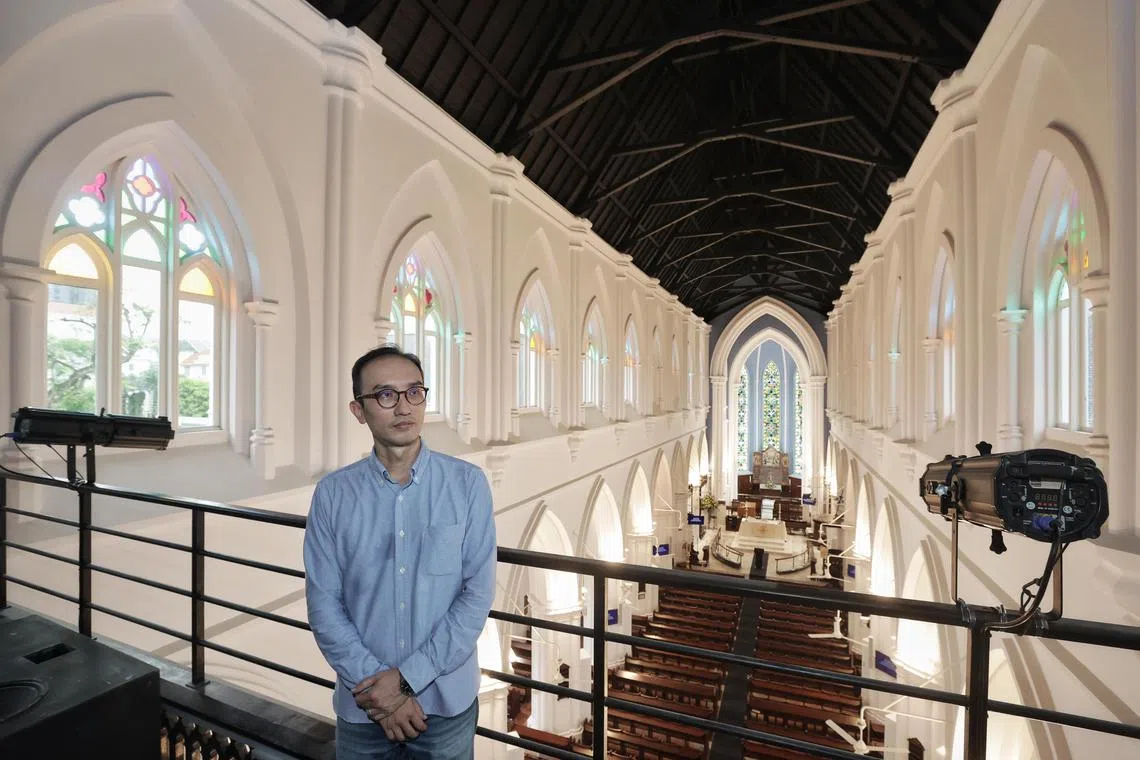
Dr Yeo Kang Shua was guided by the idea of preserving “living heritage” while fulfilling his role as the conservator in the cathedral’s restoration works.
ST PHOTO: KEVIN LIM
Tapping Dr Yeo’s expertise, the church ran plastering trials – using different plaster formulas – on selected wall areas from 2016, and on the internal walls of the bell tower in conjunction with the restoration of its cathedral bells
The restoration team then monitored the performance of the repaired walls before applying the plaster across the entire nave building in 2022.
What began as a relatively straightforward plastering repair project led to the discovery of hidden architectural features unique to the cathedral’s history. As workers investigated the walls to determine if the plaster was intact, they found architectural features concealed behind layers of white paint.
These discoveries included overlapping granite ribs – 2.5m in height – on the ceiling of the west porch, and the background colours – in shades of red, blue and green – of 10 commemorative medallions of military units and countries along the exterior of the building.
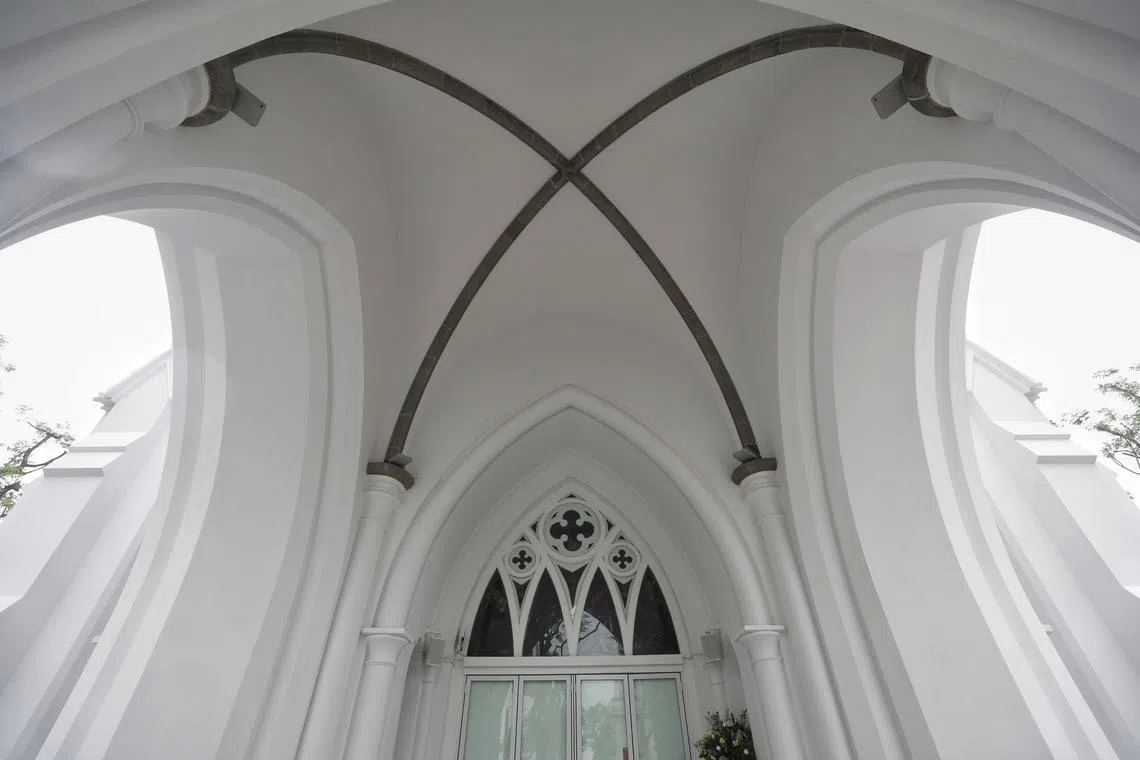
Overlapping granite ribs – 2.5m in height – on the ceiling of the west porch.
ST PHOTO: KEVIN LIM
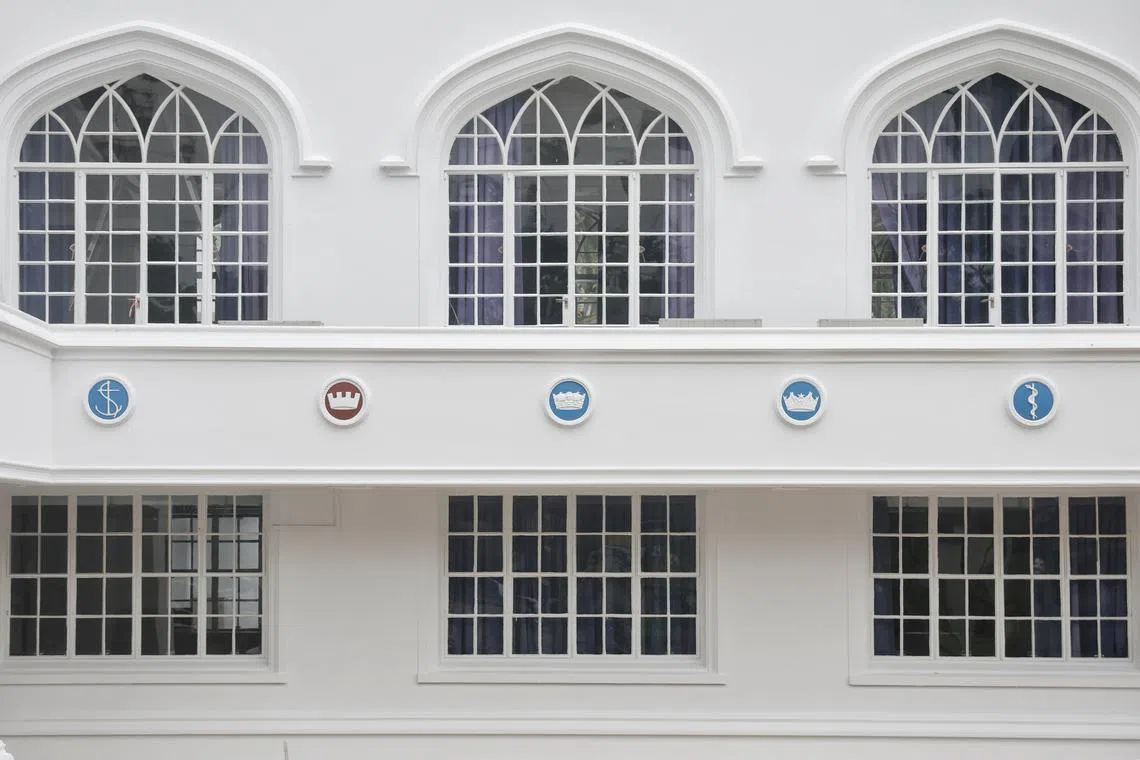
The background colours – in shades of red, blue and green – of commemorative medallions of military units and countries along the exterior of the cathedral.
ST PHOTO: KEVIN LIM
They also found that the fleurs-de-lis – lily motifs symbolising purity – on the roof’s pinnacles were made of timber and wrapped in lead sheet, instead of white plaster as previously assumed.
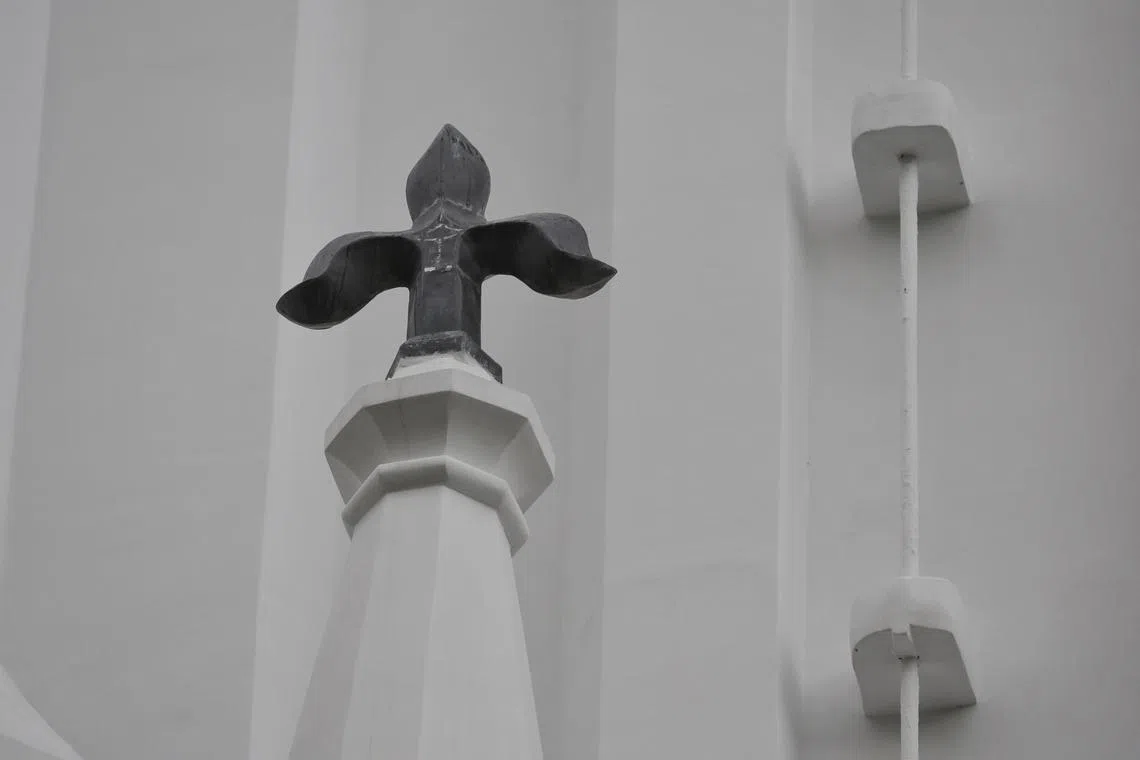
Fleurs-de-lis – lily motifs symbolising purity – on the roof’s pinnacles were made of timber and wrapped in lead sheet, instead of white plaster as previously assumed.
ST PHOTO: KEVIN LIM
On his approach to the nave’s restoration works, Dr Yeo told The Straits Times that he was guided by the idea of preserving “living heritage” since the church needed to be fully functional for worshippers to utilise.
The team decided to reveal the previously hidden features because they wanted to present a “historically true and accurate” version of the church to visitors and worshippers, he added.
The cathedral also collaborated with overseas experts such as stained-glass conservator Swati Chandgadkar from India.
Rev Chan said he witnessed “the transition from a construction site to a beautiful cathedral”.
“Overseeing this restoration project was very demanding, but I feel a real sense of joy seeing it to completion. This really is a symbol of a new season, and it is something very encouraging and exciting,” he said.

Carvings that were discovered after a decision not to reinstate the false ceiling.
ST PHOTO: KEVIN LIM
Mr Amrit Kanagasundram, a churchgoer who has been attending service at the cathedral since 2014, welcomed the newly refreshed nave, and said he felt “pretty good” that “the building has been given the proper care it deserves”.
The 49-year-old bank executive said: “I used to feel disheartened when I saw the dirty and decayed condition of the steeple, but now it is gleaming white, and I can see sunlight being reflected.”
According to the cathedral’s website, over $5 million was raised from members’ and partners’ donations.
Some $977,000 came from the National Heritage Board’s (NHB) National Monuments Fund, a co-funding scheme supporting the maintenance and restoration of monuments.
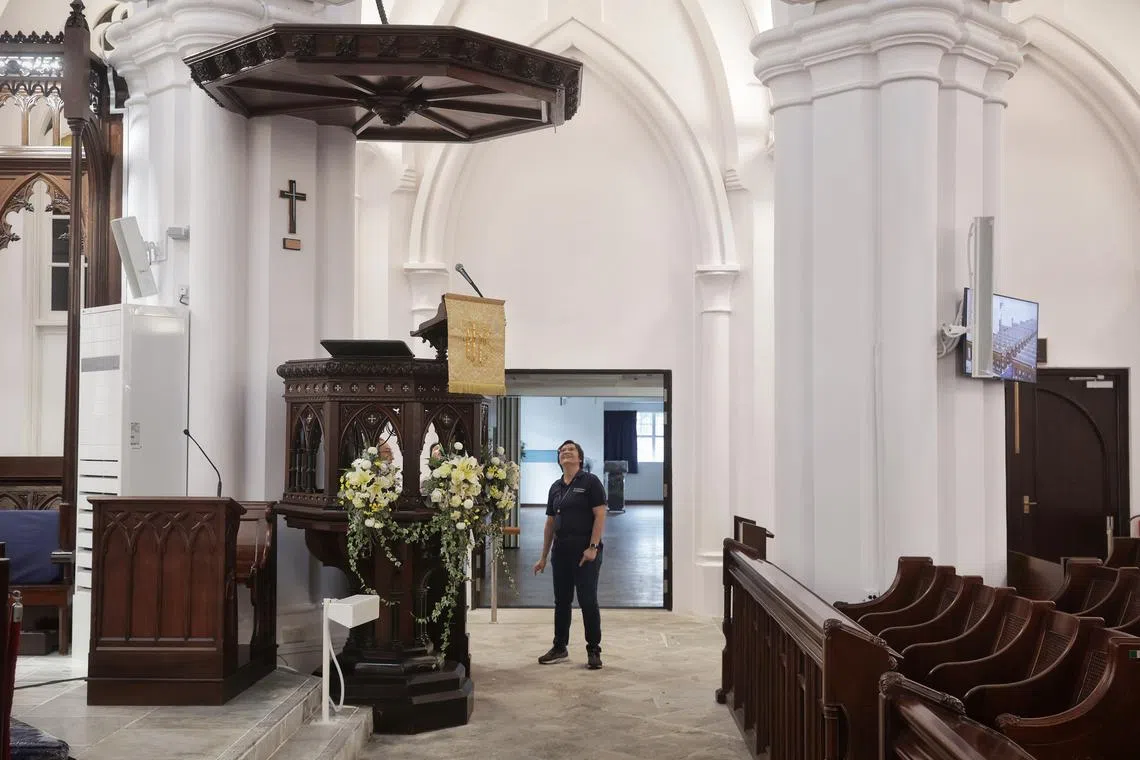
The cathedral’s pulpit.
ST PHOTO: KEVIN LIM
In response to ST’s queries, NHB said on Dec 28 that the scope of works supported by the fund included the removal of plaster as well as repainting of the entire cathedral, refurbishment of the timber flooring in its bell tower, and restoration to its pews, stalls, doors and window.
The fund will also provide the cathedral with an additional $51,000 for maintenance works. The cathedral applied for NHB’s co-funding grant in 2018.
NHB told ST that it observed significant paint peeling and defective plaster surfaces on the nave’s facade in the same year. It noted that the amount of funds awarded was assessed based on the severity and urgency of the scope of qualifying works required for rectification.
Correction note: A previous version of this article stated that Singapore has gazetted 74 national monuments. The Republic has 75 national monuments. We are sorry for the error.

